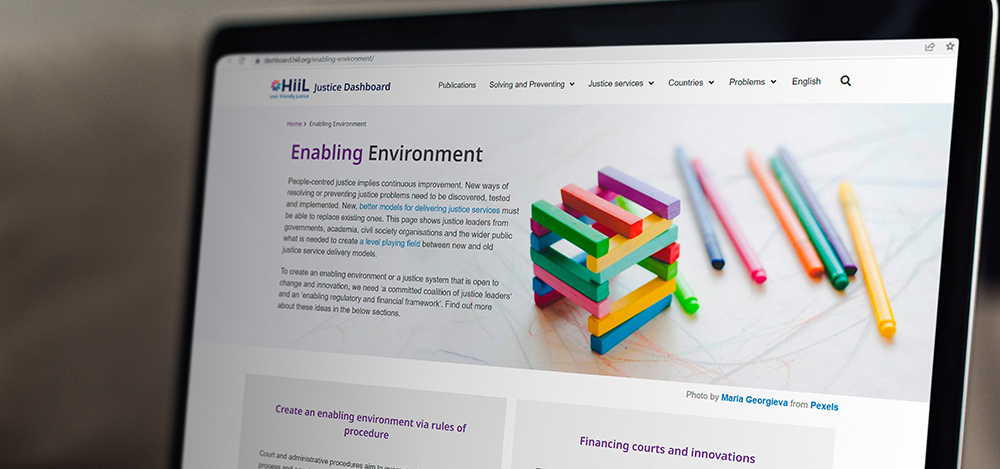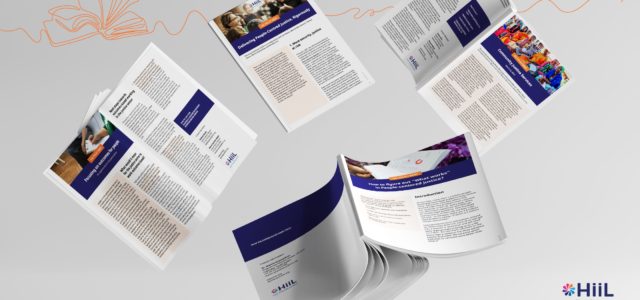
The Justice Action Coalition, a pioneering group with the objective of ensuring equal access to justice for all, has recognised the potential of new innovations in transforming the justice system. Comprised of several countries and thought-leading organisations, the coalition champions the role of people-centred justice in bridging the access to justice gap. HiiL’s Justice Dashboard has launched an important pillar of people-centred justice, one that fuels innovations in the justice sector — the enabling environment.
Currently, regulations in the justice sector act as gatekeepers, keeping innovations from entering. Unlike innovations that offer a wide range of user-friendly and effective services, they force people into adversarial dispute resolutions that don’t consistently deliver good outcomes. These regulations are difficult to change owing to habit, and professional and organisational culture.
We need to open the justice system to innovation and change, or in other words, there needs to be an enabling environment for innovations to thrive. This enabling environment can be created by ‘forming a committed coalition of justice leaders at the national level’ and ‘establishing an enabling regulatory and financial framework’. On the Justice Dashboard’s new page ‘Enabling Environment’, we unpack this pillar of the people-centred justice movement.
A coalition of justice leaders from government, civil society organisations, religious groups, local communities, and academia can devise a shared vision which prioritises the outcomes that people need. They can materialise this vision by reallocating budgetary resources and reviewing existing policies and procedures. Such coalitions are beginning to take shape in Nigeria, the Netherlands and Uganda.
We unpack the ‘regulatory and financial framework’ in 3 sections: innovating rules of procedure, public-private partnerships or procurement and funding of courts and innovations.
In the recent past, innovating rules of procedure has become a topic of interest in the justice sector. The Insitute of the Advancement of the American Legal System (IAALS) is undertaking a big project on unlocking legal regulation. Our section ‘Innovating rules of procedure’ showcases examples from around the world of innovations that have reimagined the way disputes are resolved in courts. It also outlines factors that justice leaders should take into account when innovating a procedure.
One way to change the financial framework is by adopting alternative funding arrangements like involving private players via public-private partnerships, procurement, or via complete privatisation. Promoting competition and avoiding monopolies in service provision, and deregulation can also help in this effort. To illustrate, Utah, Arizona and a few other states in the USA are trying to create a new tier of legal service providers who will provide certain services in particular legal areas for those who cannot afford a lawyer. We provide an overview of these arrangements and discuss their merits and demerits on the ‘Make or buy? Enabling environment for public-private partnerships and creative sourcing of people-centred justice services’ section. For justice innovations that struggle to raise funds when scaling and improving, we share insights on revenue and investment models of successful innovations based on our experience of supporting innovations via HiiL’s Justice Accelerator. Meanwhile, institutions in the formal justice system also struggle to raise funds due to budgetary constraints. We propose alternative sources of revenue for such courts including user fees, a pay-as-you-go system, targeted subsidies to users and many others. A more detailed explanation of these can be found in the section ‘Financing courts and innovations’.



